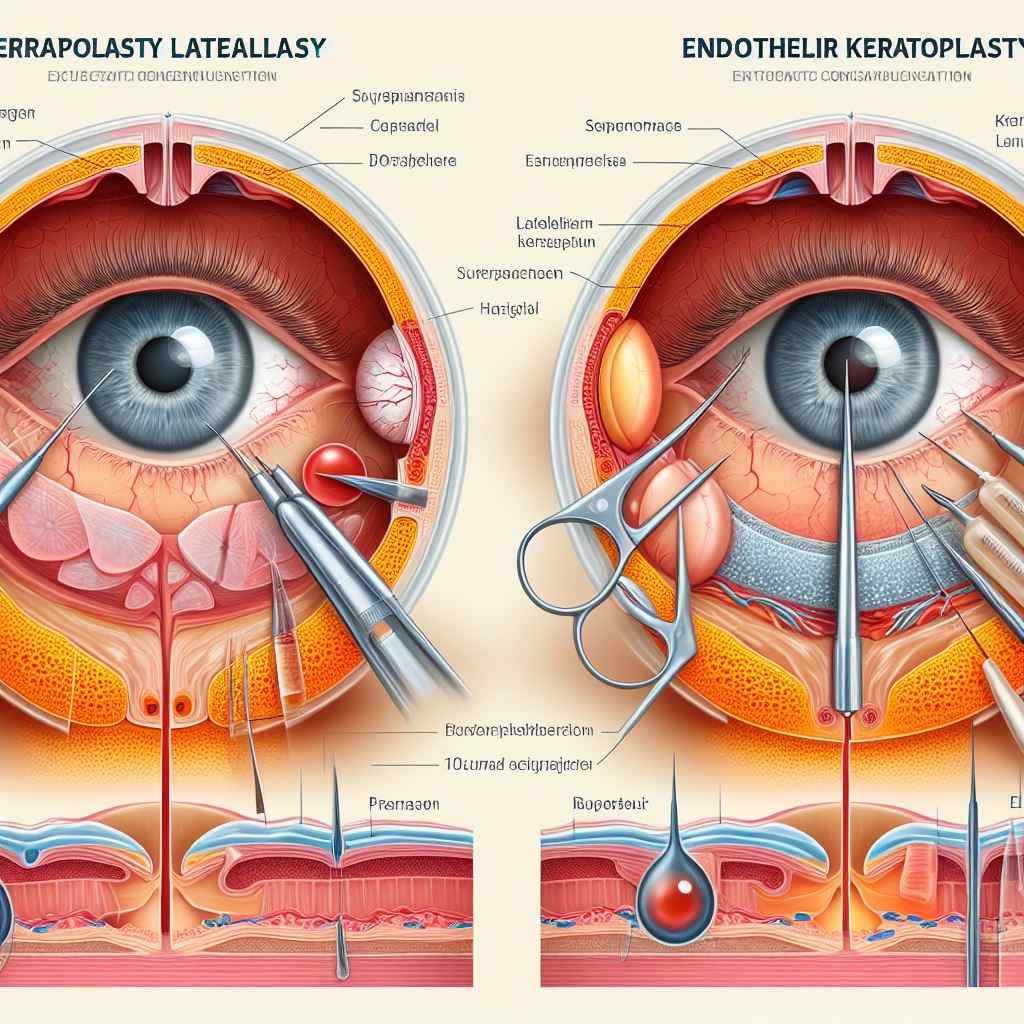
Unveiling the Advancements in Keratoplasty: Exploring Lamellar and Endothelial Keratoplasty
Abstract: Keratoplasty, encompassing lamellar and endothelial keratoplasty techniques, revolutionizes corneal transplantation by offering precise interventions tailored to specific layers of the cornea. This article navigates through the intricacies of lamellar and endothelial keratoplasty, elucidating their procedural nuances, indications, outcomes, and evolving trends.
Introduction: Keratoplasty has evolved from traditional full-thickness penetrating techniques to lamellar and endothelial keratoplasty, preserving corneal architecture and promoting faster visual rehabilitation. The advent of these innovative approaches heralds a new era in corneal surgery, enhancing outcomes and expanding indications for corneal transplantation.
Lamellar Keratoplasty: Lamellar keratoplasty involves selective replacement of corneal layers, preserving endothelial function and minimizing immunologic graft rejection. Techniques such as deep anterior lamellar keratoplasty (DALK) and Descemet’s stripping automated endothelial keratoplasty (DSAEK) offer tailored solutions for anterior and posterior corneal pathologies, respectively. (Source: American Academy of Ophthalmology – Corneal Transplantation)
Endothelial Keratoplasty: Endothelial keratoplasty targets disorders of the corneal endothelium, aiming to replace dysfunctional endothelial cells while preserving anterior corneal layers. Descemet’s membrane endothelial keratoplasty (DMEK) and Descemet’s membrane automated endothelial keratoplasty (DMAEK) are refined techniques that enhance visual outcomes and minimize graft-related complications.
Indications and Patient Selection: Indications for lamellar and endothelial keratoplasty include corneal ectasias, corneal opacities, endothelial dysfunction, and corneal dystrophies. Patient selection criteria consider corneal thickness, visual potential, endothelial cell density, and underlying etiology, optimizing outcomes and minimizing graft failure risks.
Surgical Techniques and Outcomes: Lamellar and endothelial keratoplasty procedures employ microkeratome or femtosecond laser-assisted dissection for precise graft preparation. Favorable outcomes include rapid visual recovery, reduced astigmatism, and enhanced graft survival rates compared to penetrating keratoplasty. (Source: Journal of Ophthalmic and Vision Research – Lamellar Keratoplasty)
Emerging Trends and Future Directions: Ongoing advancements in keratoplasty techniques focus on improving graft-host interface stability, enhancing endothelial cell survival, and reducing surgical complexities. Novel strategies such as preloaded donor tissue, tissue engineering, and selective cell transplantation hold promise for further refining keratoplasty outcomes.
Conclusion: In conclusion, lamellar and endothelial keratoplasty represent transformative approaches in corneal transplantation, offering tailored solutions for a spectrum of corneal disorders. By embracing technological innovations, optimizing surgical techniques, and refining patient selection criteria, we can advance the field of keratoplasty and improve visual outcomes for patients worldwide.


